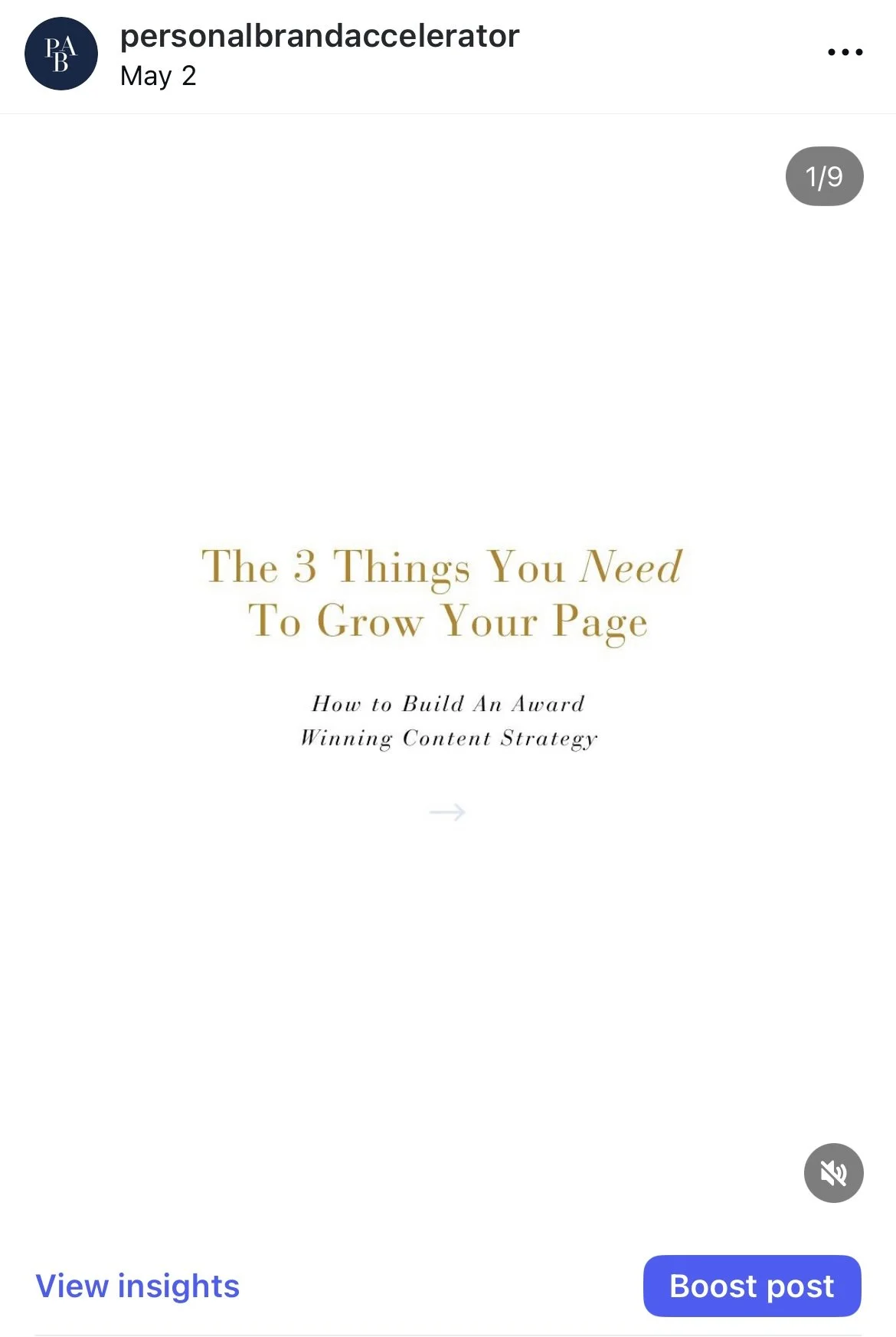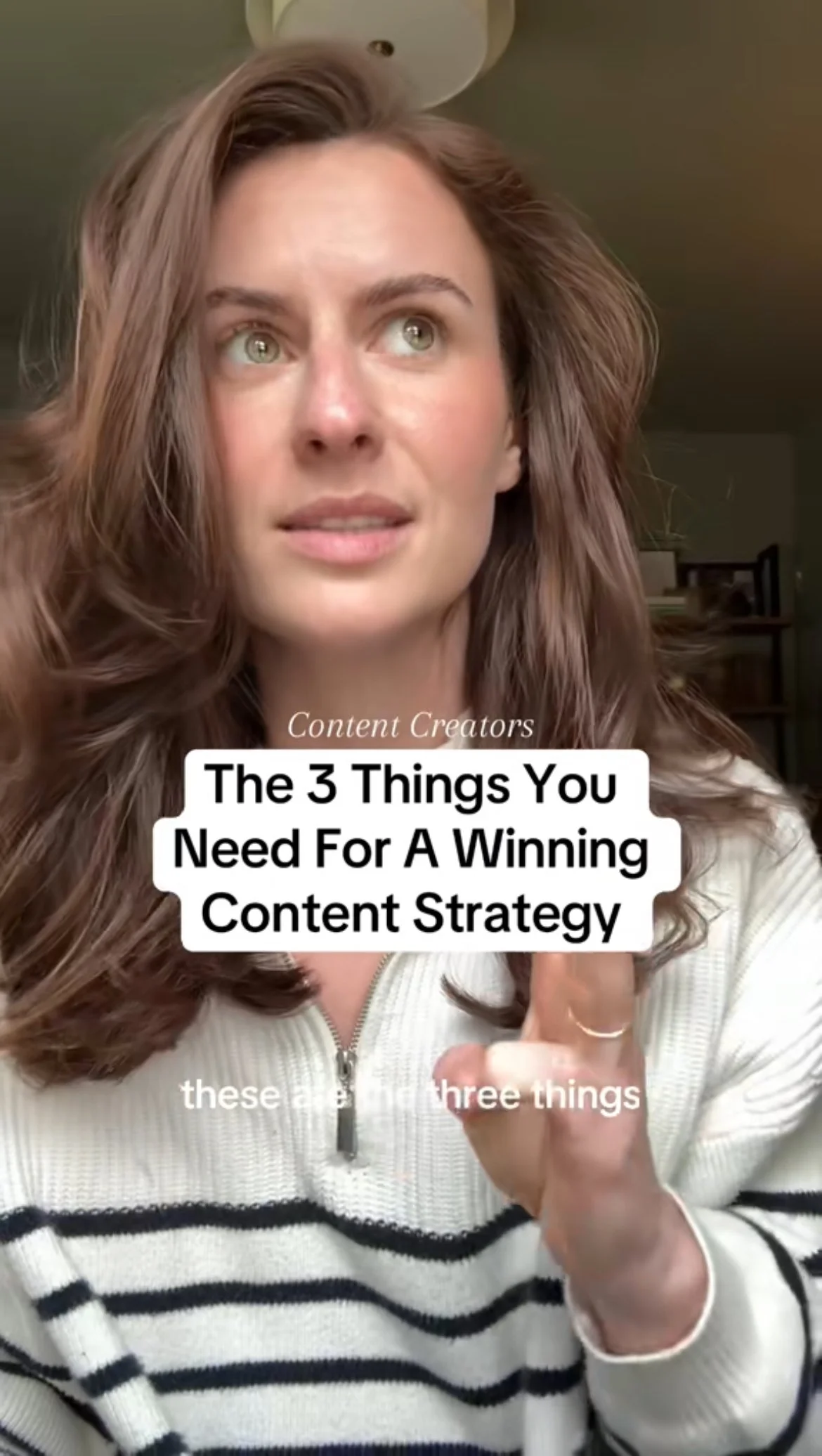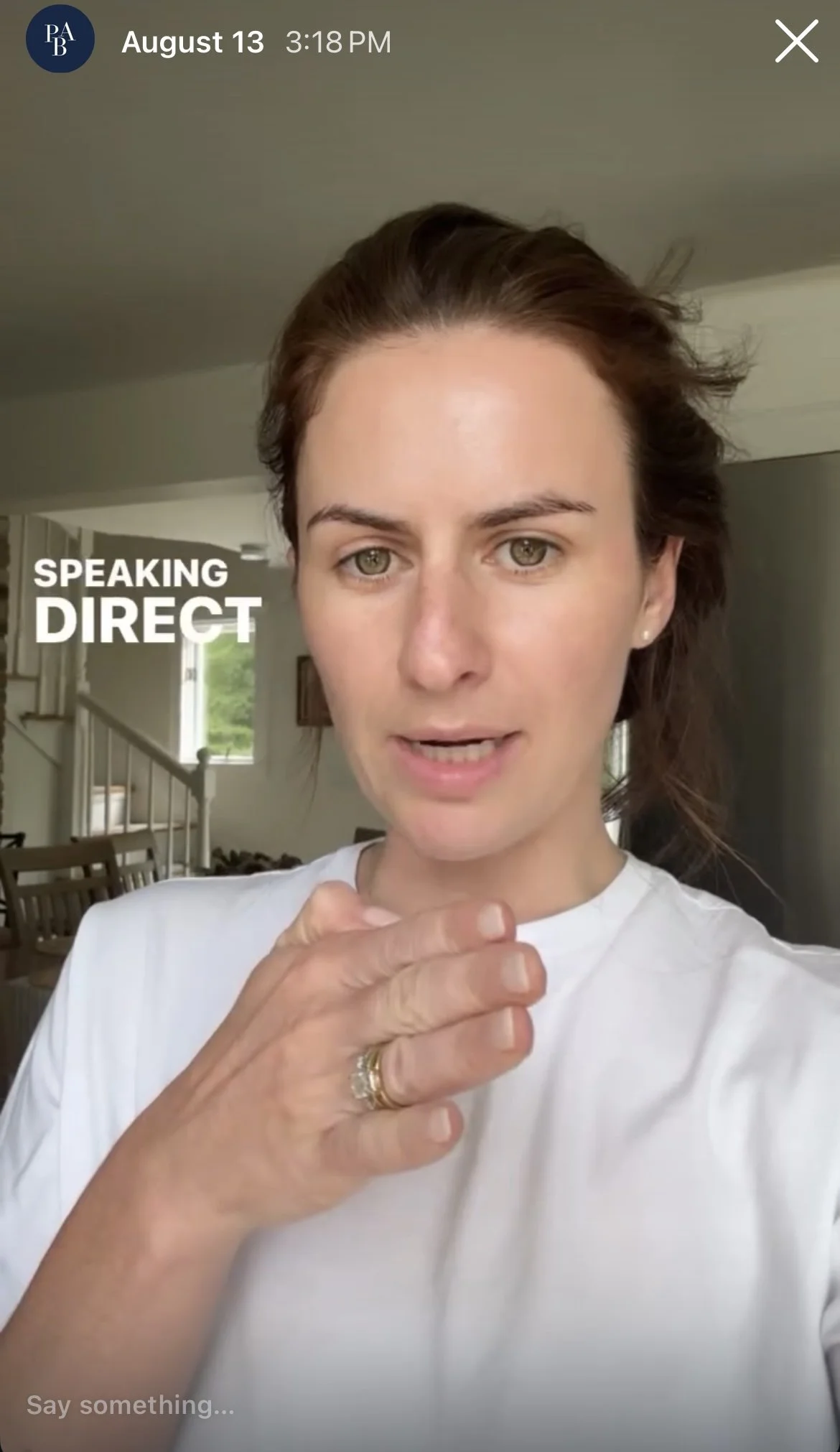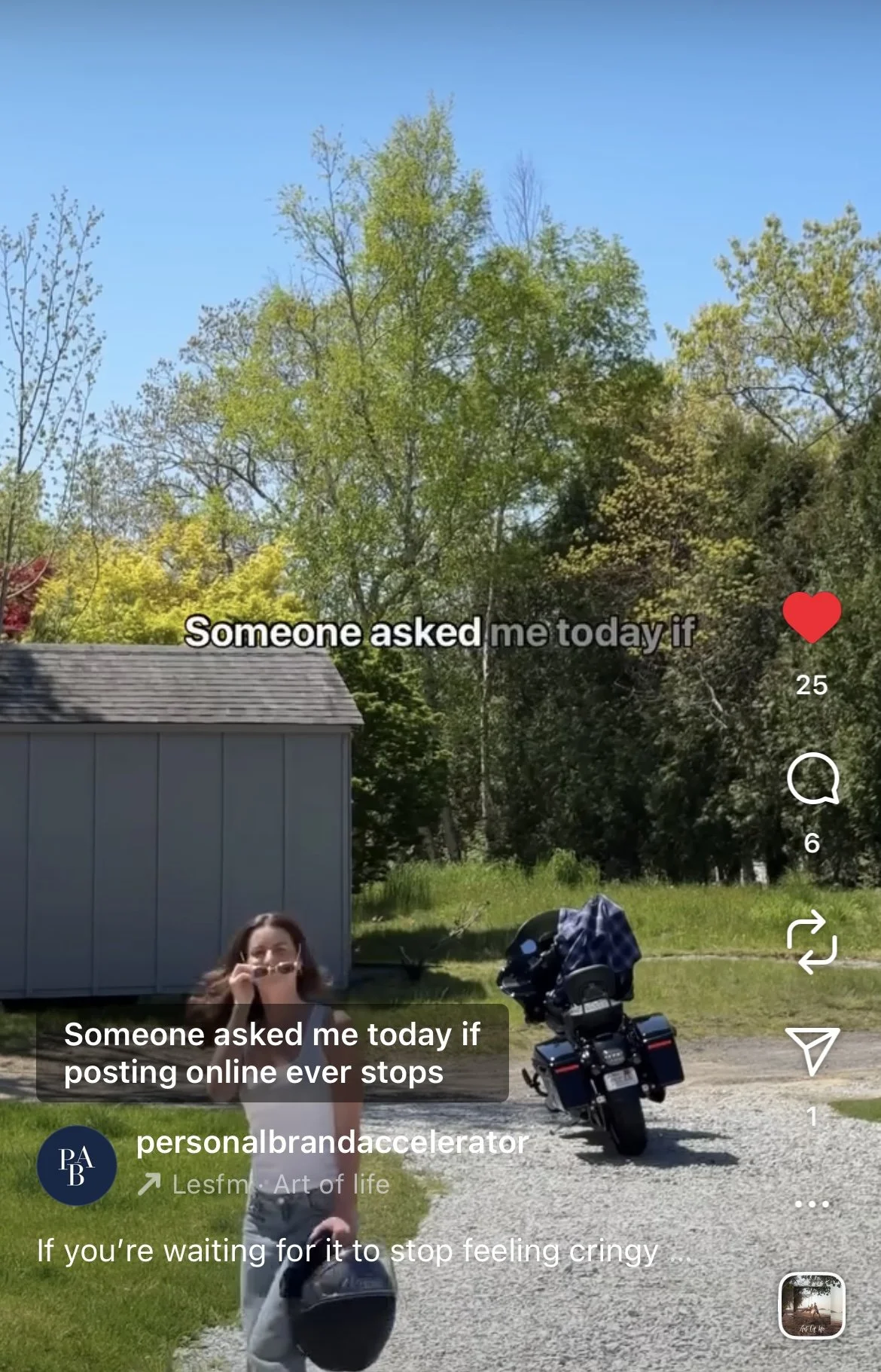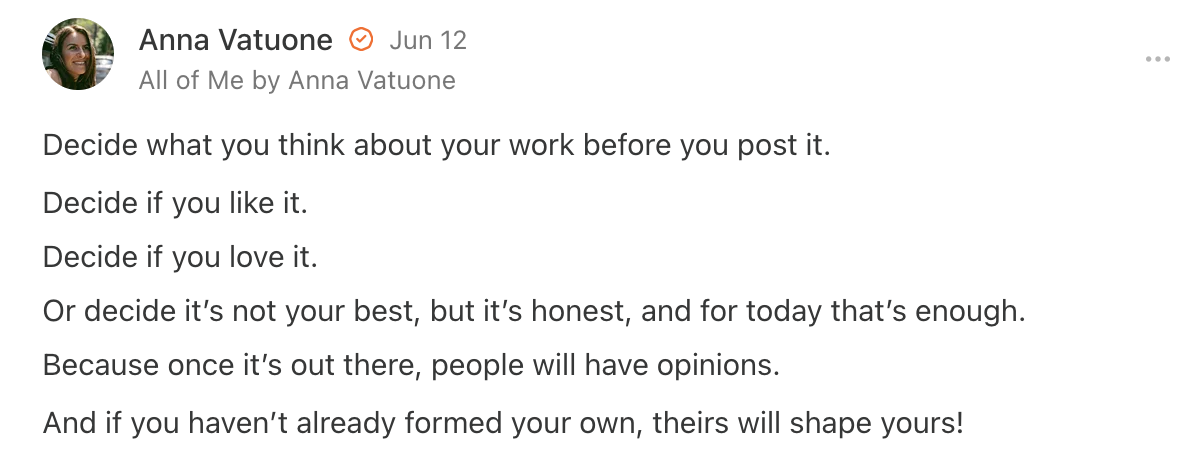The Workflow I Use to Create All of My Content
I know that creating content, or even thinking about having a “content strategy,” can feel overwhelming. There are so many directions you can take, and it’s hard to know which one is the right one, especially when you’re trying to balance it against the goals you have for your life and work.
For me, the only way I’ve been able to make peace with this is to think of my content as an extension of me — not just my work, not just my brand, but me as a person. That’s ultimately my strategy: I want my content to feel like a living, breathing extension of who I am.
Of course, I do have goals for my content. I want it to sell copies of my book. I want it to bring people into my program, PBA. I want it to continue building my business. Those things matter to me. But I’ve found that the most effective (and authentic) way to achieve those goals is by staying rooted in myself — my values, my truth, my wisdom — and using my life as my source material.
And the way I stay connected to myself is through writing. Specifically, through a practice often called morning pages. But let me be clear: “morning” doesn’t matter so much. What matters is stream-of-consciousness writing — writing without censoring yourself, without performing, without trying to please an audience. It’s writing for yourself. That kind of writing has become the wellspring of all my content.
From there, everything else flows.
Starting With Morning Pages (Anytime of Day)
Every day, I sit down to write. Sometimes it’s in my journal, other times it’s on my laptop. The form doesn’t matter as much as the practice itself. I write whatever is on my mind: the things I’m working through, the ideas I’m inspired by, the past experiences I’m reflecting on.
Because I do this every day, I always have a pulse on what feels most alive for me. Those raw notes become the foundation of my content.
From Journaling to Long-Form Writing
The next step in my process is deciding what to expand into a longer piece. For me, that usually means a Substack post. Lately, the sweet spot has been somewhere between 850–1200 words. Long enough to dig into a story, but short enough to keep someone’s attention.
Writing a newsletter takes me around four days on average. I don’t sit down and write it all at once. I prefer working in small bursts, coming back to the piece with fresh eyes until it feels right.
And once I’ve shaped my thoughts into a long-form essay, the rest of my content becomes so much easier.
Repurposing Long-Form Content Into Shorter Formats
One Substack post turns into many different pieces of content across platforms. Here’s how I usually break it down:
Carousels for Instagram or TikTok – Sometimes I’ll lift the words straight from my Substack, other times I’ll create a shorter variation. Either way, I include a call to action inviting people to subscribe.
Talking head videos – Because I’ve already written through the idea, getting on camera feels effortless. I’m not scrambling to figure out what I think in the moment—I’m simply repeating something I’ve already worked out.
Instagram Stories – I use stories to spin off from the main essay. For example, if I wrote about discipline and creativity, my stories might highlight the personal moment that inspired the piece. I’ll use four or five frames to set up the context and then link to the full essay.
Voiceovers – These let me distill the arc of my Substack post into something short and punchy. I usually start fresh, but the underlying story structure stays the same: I used to believe this. Then this happened. Now I see it differently.
Substack Notes, LinkedIn posts, and captions – Every long-form piece contains at least two or three standalone paragraphs that can live as their own micro-posts. Sometimes I’ll pair one with a photo for Instagram. Other times it becomes a Note or a LinkedIn update.
The point is: one essay can fuel an entire week of content across platforms.
Balancing Structure With Spontaneity
That said, not everything I create is carefully planned. A lot of what I post on TikTok or Instagram happens on the fly. If I have an idea, I try to execute it right away before it loses energy.
That’s why I don’t plan weeks in advance. For creators who use their life as source material, it’s nearly impossible to know what will feel relevant two weeks from now. I usually keep a working list of two or three posts, cross them off, then add new ones as the week unfolds.
Still, having my Substack essays as the anchor keeps me grounded. They ensure my content always circles back to what feels authentic, meaningful, and true to me.
Why This Workflow Works
If I had to come up with brand-new ideas every single day, I’d burn out fast. Instead, my system allows me to:
Stay connected to myself through daily journaling.
Develop big ideas in a long-form format.
Repurpose those ideas into multiple shorter posts.
Stay spontaneous when inspiration strikes.
It all flows together. And it all starts with writing.
This whole process I’ve shared — turning daily writing into a sustainable content strategy — is exactly what I teach inside Personal Brand Accelerator (PBA). If you want to learn how to take your ideas, shape them into stories, and repurpose them into content that actually connects, PBA is the place to start. Join today and get your first 30 days free.
